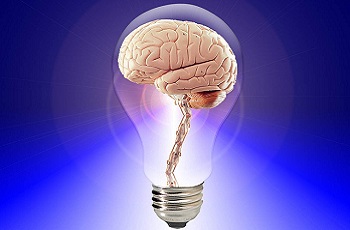Dopamine Neurons Reinforce Addiction to Heroin

According to a study in the eLife open-access journal, the report indicates that scientists have advanced in unravelling the brain connections that lead to strong addiction to heroin.
Being a powerful opioid drug, heroin is very addictive. It binds itself to various receptors in the brain then releases a chemical called dopamine.
The release, however, is temporary just like the side effects of many other drugs. The effect it leaves makes a person to want to take more of the drug.
When consumed for a long time, opioids change how the brain views the drug and it tends not to produce dopamine naturally like it used to. The person will have to take more doses of the drug for them to achieve the same level of satisfaction. The same disorder one gets from using opioids is experienced with painkillers that are prescribed to individuals following a surgical procedure. Painkillers act the same way as heroin and one may not stop taking them.
The aim of the study was to determine the role of dopamine in heroin addiction was conducted. They established that the finding could help promote effective treatment of heroin addiction and enhance the development of painkillers with low levels of addiction.
Addiction happens when a drug brings beneficial results like reward or pleasure. This can help support duplicate behaviour commonly referred to as drug reinforcement. To prevent addiction to drugs, scientists first need to understand how the brain works to support drug reinforcement.
Several arguments have been put forth emphasizing that opioids’ initial reinforcement effect doesn’t require dopamine. However, the statement raises a hot debate. This is according to Michael Loureiro, an author and Postdoctoral Individual from the University of Geneva. In the study to confirm the role of dopamine in treating heroin addiction, various genetic tools have been used selectively to manipulate and make observations on different nerve cells.
The research team first measured the levels of dopamine in the brain (specifically the nucleus accumbens) using a genetically-coded incandescent sensor. The nucleus accumbens is the main part of the brain that handles reward behaviour. Barely a minute after administering heroin on mice, a rise in the incandescent was noticed. This indicated an increase in the levels of dopamine.
The next step was to record the role of dopamine neurons by measuring the function of calcium. They established that after frequent infusion of heroin, dopamine neurons became active. The effect matched the dopamine release pattern as seen in the preceding study.
Upon establishing the function of dopamine, the scientists went ahead to determine the neural signals triggered in the process. Two tracer molecules moving to different brain regions were used. Their locations were then studied after the treatment of heroin. The findings were that a majority of the active dopamine neurons send triggers to the nucleus accumbens found in the medial shell region of the brain.
To be sure of the fact that an increase in dopamine results to drug reinforcement, the team evaluated the impacts of muzzling dopamine in mice with powerful heroin addiction and were repeatedly self-administering heroin with the use of a lever. The team found out that when dopamine neurons are muzzled, the mice reduced in self-administering heroin. Most importantly, when the team performed the procedure at the initial stages, the mice showed limited ability to self-administer the drug. Therefore, it confirms that by activating dopamine neurons found in the nucleus accumbens, early positive reinforcement of opioid drugs is enhanced.
In the final stage, the research team used mice with genetically modified dopamine neurons. The neurons were activated by light and the mice could stimulate themselves with a simple press of a lever. The study aimed at confirming whether heroin can substitute positive support caused by light. Just as anticipated, the mice that had heroin and were freed to laser light showed low chances of pressing the lever to get light stimulation compared to the ones that had light access. The finding clearly indicates that the supportive effects of heroin operate through dopamine.
Christian Luscher, a professor in Neuroscience from the University of Geneva in Switzerland confirmed after the study that the rationality of activating dopamine is vital in promoting treatment of drug addiction particularly opioids. By uncovering the process of how the brain works in relation to drug reinforcement, it becomes easier to refine the treatment of addiction. It also helps to contribute towards the development of better drugs that are less likely to cause the problem of addiction.
You can read the original article on eLife here.









